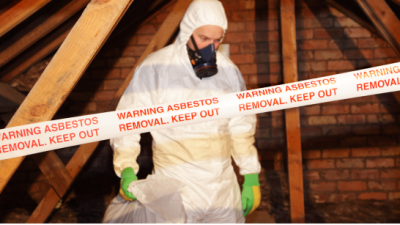Protection for workers from cancer-causing asbestos fibres will be significantly improved – but risks being implemented too late to protect those involved in building renovations part of the EU Green Deal.
The occupational exposure limit for asbestos across the EU is to be set at 2,000 fibres/m³ following trialogue negotiations between the European Commission, Council and Parliament on the revision of the Directive on asbestos at work.
The new limit is 50 times lower than the current exposure limit of 100,000 fibres/m³, but is subject to a long implementation period:
• In two years, member must lower the current exposure limit to 10.000 fibres/m3
• In six years, member states will have to reduce the exposure limit to 2.000 fibres/m3
In addition, the measurement methods to count asbestos fibres will have to change. Member states also have six years to phase in the electron microscopy method, which is more modern and accurate.
Renovation wave
Around 90,000 people lose their lives to asbestos-related cancer in the EU every year, making it the leading cause of workplace fatalities.
Between 4 and 7 million EU workers are exposed to asbestos and that number is expected to grow by 4% over the next decade as a result of building renovations as part of the Green Deal.
That’s why European trade union movements urge member states to move to the lower exposure more quickly than anticipated in today’s agreement.
The European trade union movement will also continue to push for more scientific research on the issue, as well as improved training, certification for companies and an end to derogations from the rules.
Claes-Mikael Stahl, Deputy General Secretary of the European Trade Union Confederation, said:
“For decades, the lives of millions of people have been cruelly cut short by cancer because they were unknowingly exposed to asbestos at work.
“Today’s agreement is an important step forward in ending the scandal of workplace cancer.
“But the long implementation period means that workers won’t benefit from the safer limit until after much of the renovation wave has been completed.
“That’s why it’s imperative that member states don’t wait until the end of the implementation period and put the lower limit into effect as soon as possible.”
Tom Deleu, General Secretary of the European Federation of Building and Woodworkers
“The agreement achieved in the trialogue negotiations is an important step to protect construction workers from asbestos. We now call on the European institutions to adopt the compromise as it stands.
“This will be the only way to ensure that real steps are taken to protect workers and to reduce the prospect of an asbestos pandemic caused by the Renovation Wave. It is time to invest in prevention measures, in training for construction workers and enforcement measures. This means proper and frequent inspections and dissuasive sanctions.”

